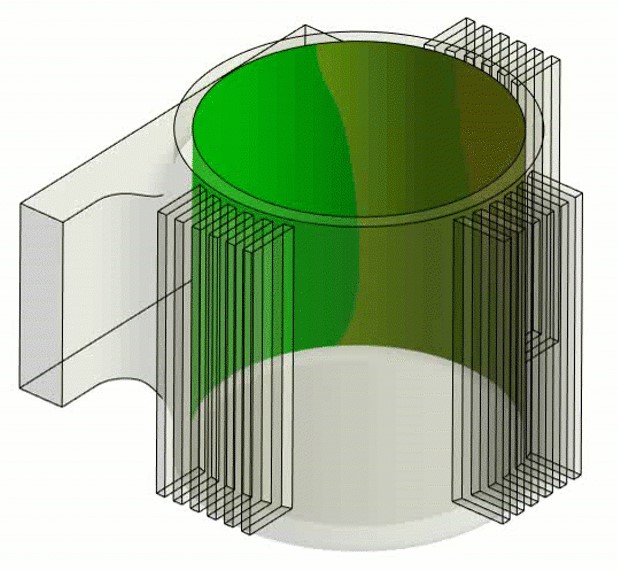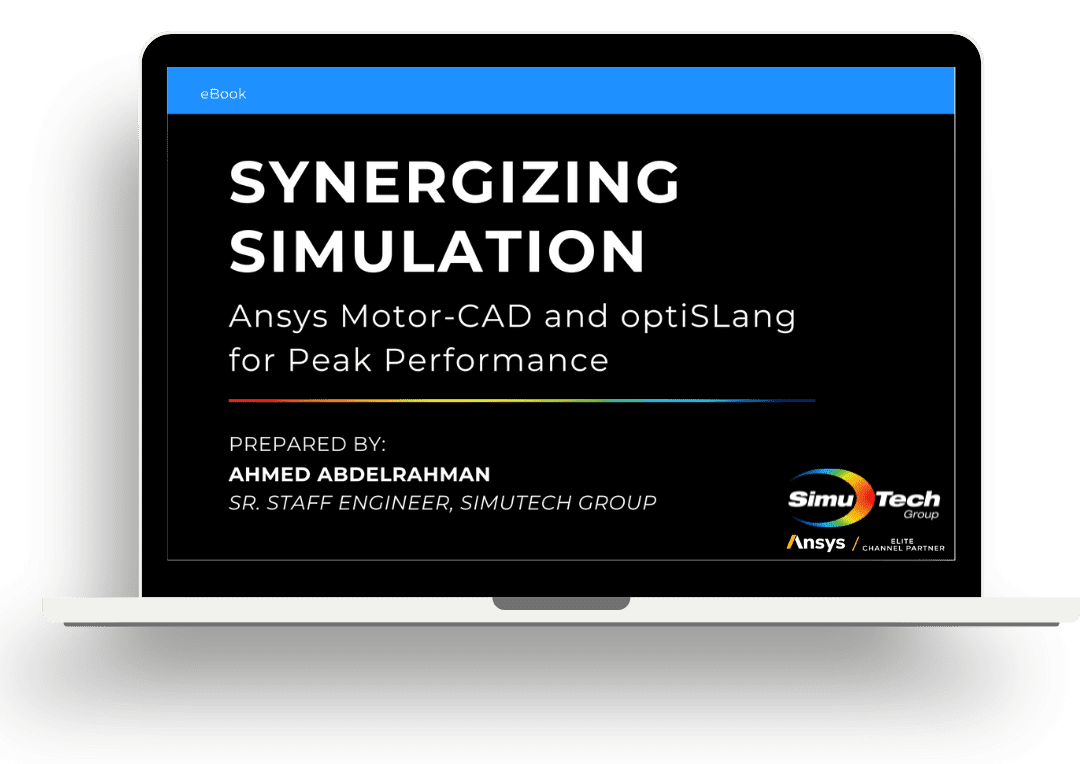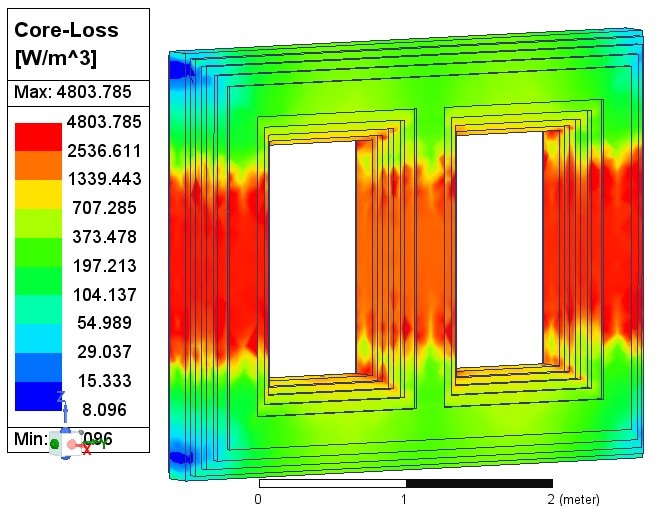
Ansys 2021R2 Release
The last Ansys 2021R2 Release supports innovation and delivers invaluable insight early in the design phase, allowing its users to create solutions early in the product development process. This release streamlines workflows, enhances the overall customer experience, and increases data visibility.
Below is a high-level overview of specific suite updates for Ansys 2021R2. To learn more about the new and updated features of the Ansys 2021 R2 release check out our upcoming webinars or contact us.
Enhanced Cloud Capabilities
The Ansys Cloud provides users access to cloud-based, on-demand resources. Through the Ansys 2021R2 Release, a larger portfolio of Ansys products is now available via desktop application or browser sessions. Additionally, capabilities such as usage analytics, multi-factor authentication at sign-in for increased security and better management of cloud-based files are now available.
Multiphysics Collaboration Update:
The Ansys 2021R2 update promotes a streamlined process to help users accelerate complex problem solving across various engineering disciplines. With updated workflows and more products integrated through the Ansys Workbench, the user can experience an improved usability and productivity.
Visualizing Efficiency through Simulation:
Dashboards and dedicated libraries give users access to a trusted data source, quickly. The material management update gives enable customers using restricted materials access to the latest Supplier Data Sheets (SDSs), ensuring compliance with global regulations.
Ansys simulation software and specifically its latest Ansys 2021R2 Release gives users the ability to explore solutions to complex problems virtually risk-free. Allowing new ideas to be tested in a digital environment, while reducing time and the expensive design, redesign cycle. Read the full detailed release below.
Product Specific Enhancements | Ansys 2021R2 Release
3D Design
- Increased use cases
- Idealized sliding contact for Discovery Live physics
- Porous media for high-fidelity physics for simple and quick simulations of jointed assemblies as well as filtered flows
- Connectivity with Ansys Workbench
- Enabling engineers to prep geometries for simulation in Ansys Discovery (this includes materials selection and upfront simulation with the ability to transfer geometries to Ansys Mechanical and Ansys Fluent)
- Connected geometry workflow
- Associative CAD interface
- History tracking
- Constraint-based sketching
- Workflow
- Saved scenes
- Physics condition suppression
- Connections to Ansys Granta Selector and Ansys Granta MI to improve and automate workflow from setup all the way through report generation
Additive Manufacturing
- Improvements in Calibration Wizard
- Now includes Variable Layer Heights
- Faster solve times and improved user workflows
- Increased accuracy with changes to meshing defaults
- Improvements to Additive Manufacturing bond connections
- Ability to apply more threads in Additive Manufacturing microstructure simulations
Autonomous Vehicle Simulation
- New capabilities for sensor simulation and asset preparation
- Verify and validate AV sensor configurations (perception and autonomous driving features)
- Added capabilities for analysis and new certification tests for headlamp designers
- Ability to model multi-nodes and see micro-Doppler effects
- Added NCAP Autonomous Emergency Braking (AEB) and Lane Support Systems (LSS) scenarios for day/night driving
- Increased productivity with new APIs to control sensor simulation and access raw sensor output
Digital Twin
- Modelica Workflow
- Now easier to extend existing models and templates, includes ability to export Win32 platform binaries (FMU) and workflow enhancements in cloning model as well as package creation
- ROMs and ROM Viewer
- Static ROM builder now supports field as an input parameter
- Now able to add point probes to geometry for custom output and access all ROMs in one place
- Export, Deployment, and Digital Twins
- Now able to build your dedicated library in Twin Deployer and Inspect 3D visualizations during simulation
- New expanded ecosystem for partner platforms such as Microsoft Azure Digital Twins and Rockwell Studio 5000 for twin export, and Linus support for PTC ThingWorx
Electronics
- New Electronics Desktop Student version
- Ansys HFSS Phi Plus meshing improvements allow for increased speed and capacity for 3D IC packaging simulation (includes wire bonds)
- Ansys HFSS SBR+ now enabled with efficient simulation of 3D dielectrics (ex: automotive bumper fascia and antenna radomes)
- Ansys SI Xplorer now helps PCB designers define stack-up and optimize via transitions
- EMA3D Cable’s mesh subgrid allows for defining regions in the model where mesh cell size differs from the rest of the model
- Ansys Icepak solver improvements allow for 10-100x faster MCAD geometry processing and solving. Joule heating analysis now solves coupled electrothermal problems with static or transient excitations and thermal ROM simplifies setup for variable flow rate models/problems
- Ansys Maxwell’s solver now enhanced to perform conductive EMC analysis for busbars, power electronics, and PCBs. Maxwell 2D skew model now enables 3D simulation accuracy of electrical machines at 2D speed
- Improved thermal dependency response of permanent magnets and broadened applications of NVH in electromechanical devices
- New Ansys Nuhertz FilterSolutions allows an RF or digital filter design, synthesis, and optimization solution that integrates with Ansys HFSS
Embedded Software
- Now enables for quick creation and deployment of advanced systems for next generation cockpit displays, mission systems, and operator controls for FACE Technical Standard conformance of Ansys ARINC 661 Cockpit Display Systems (CFDS) Server
- Updated design and verification flow for automotive projects with enhanced AUTOSAR, A-SPICE, and ISO 26262 support
- Updated solution for embedded display software testing (includes the full V&V workflow from test execution on host, automated image comparison, automated model coverage measurement, and test target harness generation)
- Ansys now qualified to provide safe software certification across all industries (for highest safety integrity/assurance levels of DO-178C, ISO 26262, IEC 61508, EN 50128 standards)
Fluids
- Improved simulation of bulk granular flows by coupling discrete element simulations to fluids and structures with Ansys Rocky
- Increased high-speed flows up to 5X to Mach 30 and above with improvements in density-based solver
- Increased accuracy for hypersonic simulations with built-in thermodynamic non-equilibrium effects such as NASA-9 coefficient material properties and partial slip-wall models for rarefied flows
- New built-in workflow for wall recession to model surface ablation
- Integrated best practices in automated mesh adaption setup for combustion and multiphase applications providing cell count reductions up to 70%
- Enhanced strained-FGM model for better NOx and CO predictions
- Added support for liquid phase for Ansys Chemkin-Pro
Materials
- New integrations with Ansys Granta Selector and Ansys Granta MI Pro with Ansys Discovery for early-stage design materials
- Easier management of ‘gold-source’ materials data
- Updated material data to support industry-specific applications
- New Chemwatch partnership allows for easier access to find more data
Optics and VR
- Simulation meshing now 20x faster with local meshing up to 100x faster
- Add Material Libraries for quicker simulation setup
- Speos Live Preview provides 100% true-to-life results as provided with Speos CPU
- Easier optical lighting designs with spread control on TIR Lens
- New dynamic lidar capabilities allow evaluations of distortions on raw signals. Lidar sensor simulations now compatible with Speos HPC and Ansys Cloud
Photonics
- New HPC (Ansys Cloud Direct) and OS support (SUSE and Ubuntu Linux)
- Now allows for multiproduct simulation workflows with integration of Ansys OptiSLang
- Added support for Ansys Lumerical MQW for excitons in gain calculation, new UI, and additions to material database
- Ansys Lumerical STACK now supports thick (larger than coherence length) layers for emissive display applications
- New workflow for Lumerical STACK and Ansys SPEOS for display applications from nano pixel design to human perception analysis
- Added improvements to Lumerical System Tools (import netlists from Tanner S-Edit into Lumerical INTERCONNECT, improved photonic compact models in CML Compiler, and Touchstone format support for optical simulation)
- New layer builder support for electrical and thermal materials models in foundry process files
- Includes anisotropic material support and a new PML boundary condition in Ansys Lumerical FEEM
Platform
- Ansys optiSLang has an added flexibility and accessibility with new packaging model for both premium and enterprise licenses.
- Ansys Minerva now has improved custom dashboards that allow for enhanced collaboration
- Ansys LS-DYNA and LSTC are now available to integrate with Ansys Cloud
Safety Analysis
- New Ansys Digital Safety Manager for overall safety-related activities management
- Reliability Block Diagrams (RBD) now describe and analyze system reliability
- Extended failure net shows failure rates at malfunctions and can consider conditional probabilities
- Added support for cybersecurity goals guided by ISO 21434
Semiconductors
- Ansys RedHawk-SC Electrothermal now available for comprehensive thermal, electrical, and mechanical analysis of 2.5D/3D IC packages
- New RedHawk-SC flow for finding activity vectors that lead to worst-case timing impact of dynamic IR drops
- Enhanced debugging of dynamic voltage drop (DVD) issues through Advanced Power Diagnostics in RedHawk-SC
- New Ansys Totem-SC, Ansys PathFinder-SC, and Ansys PowerArtist-SC (based on SeaScape technology and infrastructure that allows for big-data elastic computation and native cloud enablement)
Sound Simulation / Acoustics
- Ansys Motion and Ansys VRXPERIENCE Sound integration now allows for drag-and-drop linking in Workbench between harmonic acoustics systems and multi-body dynamics analyses results within Ansys Mechanical
- Direct access to Ansys Fluent, Ansys Mechanical, and other Ansys products with the Ansys VRXPERIENCE Sound SAS in the Ansys Unified Installer allows for quick improvements to acoustic performances and sound qualities of e-motors and fans.
- Advances in acoustics solver technology in Ansys LS-DYNA and transient acoustics workflow in Ansys Mechanical now enables to handle glass wool materials in cabin acoustics simulations
Structures
- Ansys Sherlock integration with Ansys LS-DYNA with single-click automated workflow in Workbench (allows for quick meshed models for drop-test simulations in LS-DYNA)
- Increased exposure for LS-DYNA technologies in Ansys Mechanical (Smooth Particle Hydrodynamics – SPH, Arbitrary Lagrangian Eulerian – ALE, implicit/explicit solutions that enable workflows such as pre-stress loading and restarts for drop-test simulations
- Streamlined multistage analysis with Ansys Mechanical provides differing cyclic symmetry sector counts in the same model allowing run time speeds up to 50X faster





